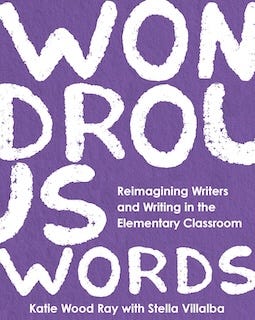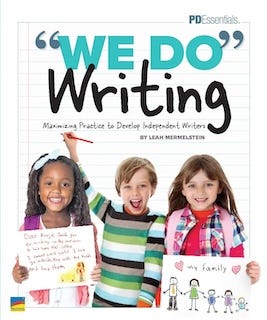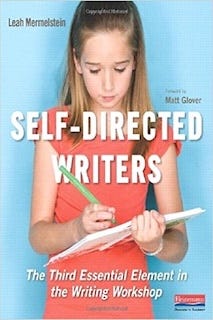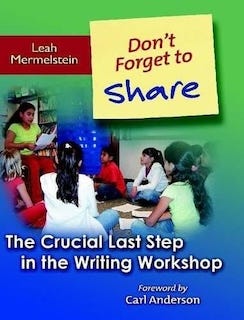Teaching writing is one of the most important—and rewarding—parts of our work as educators.
But it can also be one of the most challenging.
Writing instruction requires us to balance creativity with clarity, nurture voice while building skill, and guide students through a process that doesn’t always follow a predictable path.
Many teachers find themselves asking:
Am I focusing on the right skills?
Are my students growing as writers?
Why does progress feel so uneven?
The good news is, the research is clear: sentence-level work matters.
Explicit instruction in sentence construction, sentence combining, and complex sentence patterns has a powerful impact on student writing.
That’s where my Mentor Text Bundles come in.
They’re designed to bridge the gap between research and classroom practice—offering simple, replicable models that help students internalize what great sentences look and sound like.
These texts don’t try to impress—they’re built to teach.
They meet students where they are and help them move forward, one strong sentence at a time.
Of course, there’s still room for those “wow” texts—the ones that spark inspiration and stretch our thinking. But sometimes, what students need most is a clear, just-right example they can study, try, and make their own.
In the sections ahead, I’ll show you how these mentor texts work, what’s included, and how they can help your students write with more confidence and skill—across genres and grade levels.
📌 Want to learn more about using mentor texts in the classroom? My favorite book on the subject is A Teacher's Guide to Mentor Texts: The Classroom Essential Series
📌 If you are as old as I am, you will also be excited to learn that Katie Wood has written a new version of Wondrous Words that will be out in the world in August!!!
I have already pre-ordered my copy and you should too. Her books are invaluable resources for ALL THINGS mentor texts.
What’s Inside My Mentor Text Bundle?
I’ve carefully crafted mentor texts for different grade levels, all designed to provide accessible models while challenging students to grow as writers. Here's what you’ll find
K-3: For younger learners just beginning to explore the structure of writing.
4-6: For upper elementary students ready to dive deeper into complex sentence structures and ideas.
K-6: A version that spans all grades to provide flexibility in classroom instruction.
Types of Writing Included in All of Them:
Opinion writing
Informational writing
Narrative writing
Literacy essays
Compare and contrast writing
Responses to specific writing prompts
The Components of Each Mentor Text: A Peek Into the Process
Each mentor text in my bundles is designed to make your teaching more effective by providing clear, accessible examples that help students grow as writers. I’ve created these texts to be developmental and flexible, allowing them to be used in a variety of ways within your classroom.
Let’s take a quick look at one of the texts from the 4-6 bundle: a Compare and Contrast paragraph. This text serves as a great example of a “just-right” mentor text, offering a model that fits where students are in their writing journey while still challenging them to grow.
The Key: Dissecting the Power of Each Sentence
Here’s the key to understanding how each sentence works in this Compare and Contrast paragraph. The sentences are color-coded to help you and your students identify the different structures and techniques at play:
Blue: Opening with a question
Red: Topic sentence
Purple: Evidence
Orange: Citing the text to provide evidence
Green: Ending with a call to action
This system not only helps you guide your students through each sentence but also allows them to see how strong writing is built from clear, purposeful structures.
In the next section, I’ll show you how you can use these texts in your classroom for maximum impact.
How to Use These Mentor Texts
My goal with these mentor texts is to make your teaching as easy and effective as possible. Here’s how you can use them in your classroom:
Whole-Class Lessons: Use the mentor texts as a tool to teach students about sentence structures, including how to effectively use topic sentences, evidence, and call-to-action endings.
Example: “Today we’re going to focus on the ‘call to action’ ending. We’ll look at an example and notice the sentence structure and the types of vocabulary used. Then we’ll practice writing our own call to action ending sentence together.”
Feedback and One-on-One Support: As students work on their own writing, use the mentor texts as a reference for giving specific feedback.
Example: “I see you’re struggling with how to organize your contrasting ideas. Let’s look at this mentor text together and notice the vocabulary used when contrasting two things.”
Independent Writing: Encourage students to keep their mentor text handy so they can refer to it when they’re unsure about how to structure a sentence or organize an idea.
Example: “Keep this in your writing folder. If you’re unsure about how to organize your ideas or structure a sentence in your own compare and contrast paragraph, this example will guide you.”
Why Mentor Texts Matter
In the fast-paced world of education, it’s easy to focus on the “big ideas” and forget that students need concrete, actionable examples to guide them. Mentor texts serve as a bridge between abstract concepts and practical writing skills. They provide models that help students see what good writing looks like while also giving them the tools to replicate those strategies in their own work.
My mentor texts are designed to be a reliable resource that works with you to help your students succeed.
They provide just the right level of complexity to help students grow in their writing, without overwhelming them with examples that are too far ahead of where they currently are.
Ready to Use Mentor Texts in Your Classroom?
If this has sparked your interest, I’d love for you to join me on Tuesday, August 12th, from 7–8 PM ET, for a live virtual session where we’ll dig deeper into the connection between reading and writing.
AN ADDED BONUS: Once you sign up, you will receive a discount code for my full mentor text collection. .
I hope you’re excited about how these mentor texts can support your students’ writing journey. Whether you’re introducing new types of writing or supporting students as they revise their drafts, these resources are designed to make your job easier—and more impactful.
Click here to learn more and buy the version that fits your role.
💬 Have questions—or need help writing a funding request? Use the chat or reach out privately anytime. I’m here to help.
🧠 Want help on how to use mentor texts in your ongoing units? Sign up for a coaching call and I’ll walk you through it step by step.
If my thinking resonates with you, I’d love to help you customize it for your school or district.
📌Make sure to visit my website.
📌 Want to learn with me over the summer? Sign up for LMC’s Summer Literacy Series If you sign up for all five you get a 10% discount. If you are a paid subscriber to my Substack you get an additional 10% off.
📌Want me to work directly with your school or district? Sign up for a discovery call.
📌Check out my most recent book, "We-Do" Writing for a research aligned framework for how to support writing instruction and curriculum.
📌My book Self-Directed Writers will ensure that all of your students are engaged, self-directed and motivated writers.
📌My book Don't Forget to Share shows you how to leverage conversation to improve writing.
📌Check out my article 6 Qualities for a Strong Writing Curriculum
📌Check out Zaretta Hammond’s book, Culturally Responsive Teaching and the Brain This book does a great job at honoring the science and art of teaching.
📌Want to learn more about student engagement? My two favorite books are Free to Learn and Engaging Children.
(This post may contain affiliate links.)












